Omkar Thawakar
How Good are Foundation Models in Step-by-Step Embodied Reasoning?
Sep 18, 2025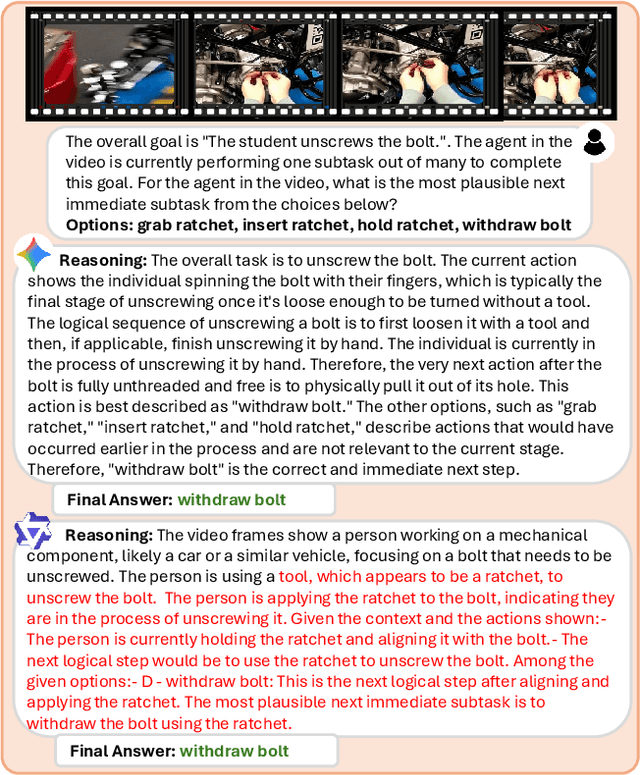
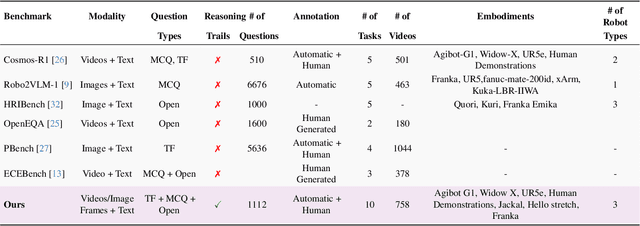
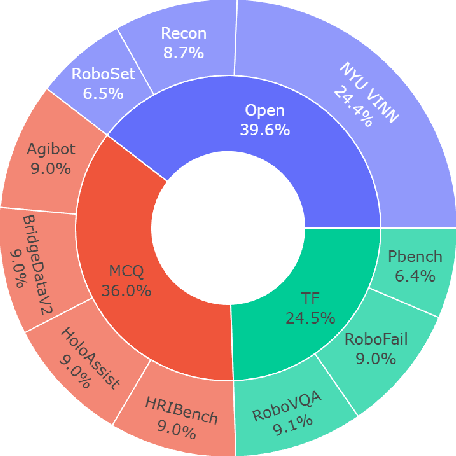
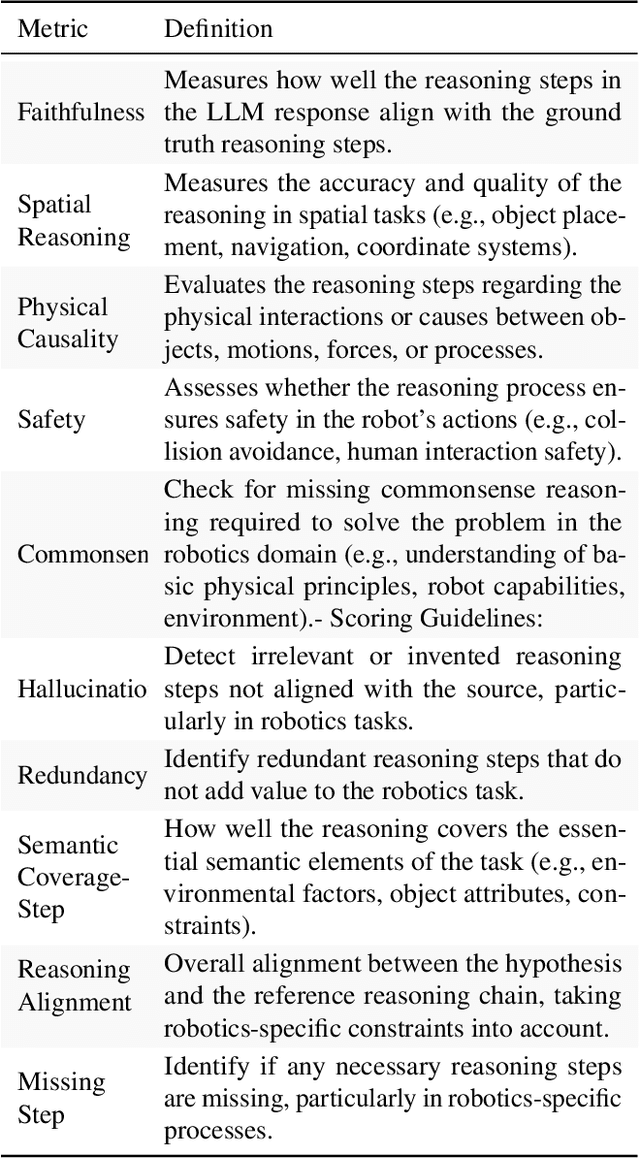
Abstract:Embodied agents operating in the physical world must make decisions that are not only effective but also safe, spatially coherent, and grounded in context. While recent advances in large multimodal models (LMMs) have shown promising capabilities in visual understanding and language generation, their ability to perform structured reasoning for real-world embodied tasks remains underexplored. In this work, we aim to understand how well foundation models can perform step-by-step reasoning in embodied environments. To this end, we propose the Foundation Model Embodied Reasoning (FoMER) benchmark, designed to evaluate the reasoning capabilities of LMMs in complex embodied decision-making scenarios. Our benchmark spans a diverse set of tasks that require agents to interpret multimodal observations, reason about physical constraints and safety, and generate valid next actions in natural language. We present (i) a large-scale, curated suite of embodied reasoning tasks, (ii) a novel evaluation framework that disentangles perceptual grounding from action reasoning, and (iii) empirical analysis of several leading LMMs under this setting. Our benchmark includes over 1.1k samples with detailed step-by-step reasoning across 10 tasks and 8 embodiments, covering three different robot types. Our results highlight both the potential and current limitations of LMMs in embodied reasoning, pointing towards key challenges and opportunities for future research in robot intelligence. Our data and code will be made publicly available.
Beyond Simple Edits: Composed Video Retrieval with Dense Modifications
Aug 19, 2025Abstract:Composed video retrieval is a challenging task that strives to retrieve a target video based on a query video and a textual description detailing specific modifications. Standard retrieval frameworks typically struggle to handle the complexity of fine-grained compositional queries and variations in temporal understanding limiting their retrieval ability in the fine-grained setting. To address this issue, we introduce a novel dataset that captures both fine-grained and composed actions across diverse video segments, enabling more detailed compositional changes in retrieved video content. The proposed dataset, named Dense-WebVid-CoVR, consists of 1.6 million samples with dense modification text that is around seven times more than its existing counterpart. We further develop a new model that integrates visual and textual information through Cross-Attention (CA) fusion using grounded text encoder, enabling precise alignment between dense query modifications and target videos. The proposed model achieves state-of-the-art results surpassing existing methods on all metrics. Notably, it achieves 71.3\% Recall@1 in visual+text setting and outperforms the state-of-the-art by 3.4\%, highlighting its efficacy in terms of leveraging detailed video descriptions and dense modification texts. Our proposed dataset, code, and model are available at :https://github.com/OmkarThawakar/BSE-CoVR
Fann or Flop: A Multigenre, Multiera Benchmark for Arabic Poetry Understanding in LLMs
May 26, 2025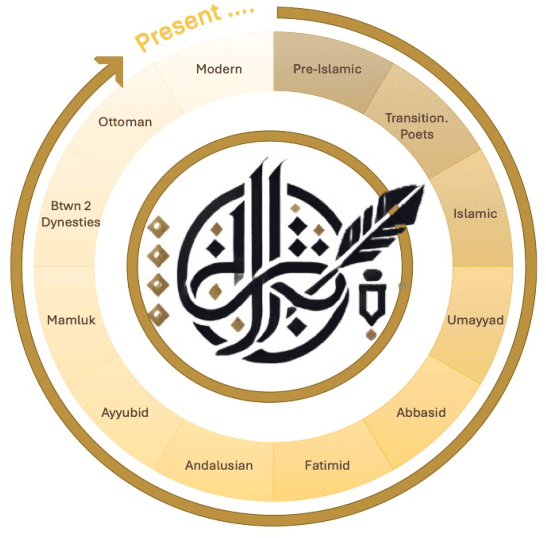

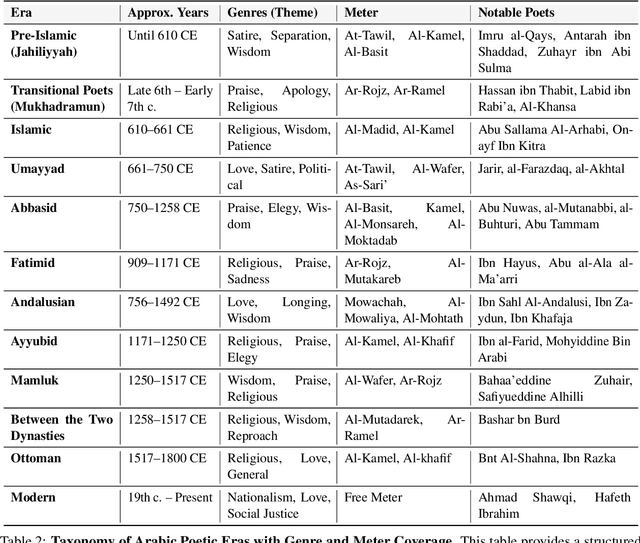
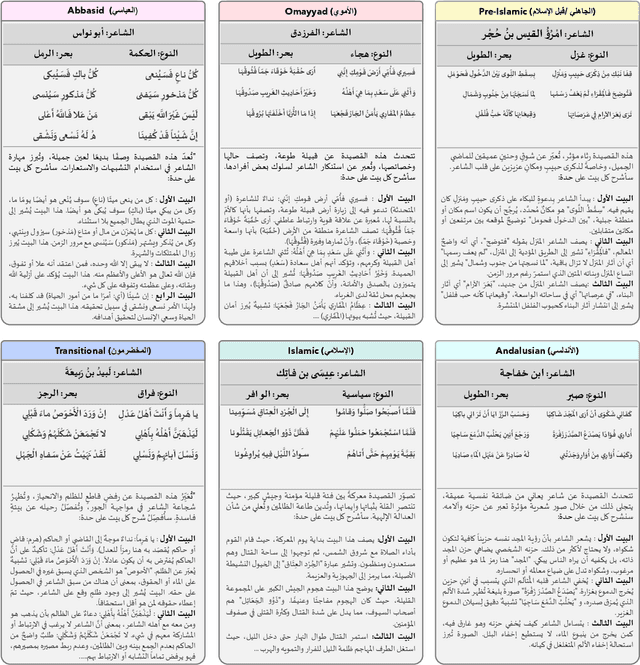
Abstract:Arabic poetry is one of the richest and most culturally rooted forms of expression in the Arabic language, known for its layered meanings, stylistic diversity, and deep historical continuity. Although large language models (LLMs) have demonstrated strong performance across languages and tasks, their ability to understand Arabic poetry remains largely unexplored. In this work, we introduce \emph{Fann or Flop}, the first benchmark designed to assess the comprehension of Arabic poetry by LLMs in 12 historical eras, covering 14 core poetic genres and a variety of metrical forms, from classical structures to contemporary free verse. The benchmark comprises a curated corpus of poems with explanations that assess semantic understanding, metaphor interpretation, prosodic awareness, and cultural context. We argue that poetic comprehension offers a strong indicator for testing how good the LLM understands classical Arabic through Arabic poetry. Unlike surface-level tasks, this domain demands deeper interpretive reasoning and cultural sensitivity. Our evaluation of state-of-the-art LLMs shows that most models struggle with poetic understanding despite strong results on standard Arabic benchmarks. We release "Fann or Flop" along with the evaluation suite as an open-source resource to enable rigorous evaluation and advancement for Arabic language models. Code is available at: https://github.com/mbzuai-oryx/FannOrFlop.
ARB: A Comprehensive Arabic Multimodal Reasoning Benchmark
May 22, 2025Abstract:As Large Multimodal Models (LMMs) become more capable, there is growing interest in evaluating their reasoning processes alongside their final outputs. However, most benchmarks remain focused on English, overlooking languages with rich linguistic and cultural contexts, such as Arabic. To address this gap, we introduce the Comprehensive Arabic Multimodal Reasoning Benchmark (ARB), the first benchmark designed to evaluate step-by-step reasoning in Arabic across both textual and visual modalities. ARB spans 11 diverse domains, including visual reasoning, document understanding, OCR, scientific analysis, and cultural interpretation. It comprises 1,356 multimodal samples paired with 5,119 human-curated reasoning steps and corresponding actions. We evaluated 12 state-of-the-art open- and closed-source LMMs and found persistent challenges in coherence, faithfulness, and cultural grounding. ARB offers a structured framework for diagnosing multimodal reasoning in underrepresented languages and marks a critical step toward inclusive, transparent, and culturally aware AI systems. We release the benchmark, rubric, and evaluation suit to support future research and reproducibility. Code available at: https://github.com/mbzuai-oryx/ARB
DriveLMM-o1: A Step-by-Step Reasoning Dataset and Large Multimodal Model for Driving Scenario Understanding
Mar 13, 2025Abstract:While large multimodal models (LMMs) have demonstrated strong performance across various Visual Question Answering (VQA) tasks, certain challenges require complex multi-step reasoning to reach accurate answers. One particularly challenging task is autonomous driving, which demands thorough cognitive processing before decisions can be made. In this domain, a sequential and interpretive understanding of visual cues is essential for effective perception, prediction, and planning. Nevertheless, common VQA benchmarks often focus on the accuracy of the final answer while overlooking the reasoning process that enables the generation of accurate responses. Moreover, existing methods lack a comprehensive framework for evaluating step-by-step reasoning in realistic driving scenarios. To address this gap, we propose DriveLMM-o1, a new dataset and benchmark specifically designed to advance step-wise visual reasoning for autonomous driving. Our benchmark features over 18k VQA examples in the training set and more than 4k in the test set, covering diverse questions on perception, prediction, and planning, each enriched with step-by-step reasoning to ensure logical inference in autonomous driving scenarios. We further introduce a large multimodal model that is fine-tuned on our reasoning dataset, demonstrating robust performance in complex driving scenarios. In addition, we benchmark various open-source and closed-source methods on our proposed dataset, systematically comparing their reasoning capabilities for autonomous driving tasks. Our model achieves a +7.49% gain in final answer accuracy, along with a 3.62% improvement in reasoning score over the previous best open-source model. Our framework, dataset, and model are available at https://github.com/ayesha-ishaq/DriveLMM-o1.
LLM Post-Training: A Deep Dive into Reasoning Large Language Models
Feb 28, 2025Abstract:Large Language Models (LLMs) have transformed the natural language processing landscape and brought to life diverse applications. Pretraining on vast web-scale data has laid the foundation for these models, yet the research community is now increasingly shifting focus toward post-training techniques to achieve further breakthroughs. While pretraining provides a broad linguistic foundation, post-training methods enable LLMs to refine their knowledge, improve reasoning, enhance factual accuracy, and align more effectively with user intents and ethical considerations. Fine-tuning, reinforcement learning, and test-time scaling have emerged as critical strategies for optimizing LLMs performance, ensuring robustness, and improving adaptability across various real-world tasks. This survey provides a systematic exploration of post-training methodologies, analyzing their role in refining LLMs beyond pretraining, addressing key challenges such as catastrophic forgetting, reward hacking, and inference-time trade-offs. We highlight emerging directions in model alignment, scalable adaptation, and inference-time reasoning, and outline future research directions. We also provide a public repository to continually track developments in this fast-evolving field: https://github.com/mbzuai-oryx/Awesome-LLM-Post-training.
Time Travel: A Comprehensive Benchmark to Evaluate LMMs on Historical and Cultural Artifacts
Feb 20, 2025Abstract:Understanding historical and cultural artifacts demands human expertise and advanced computational techniques, yet the process remains complex and time-intensive. While large multimodal models offer promising support, their evaluation and improvement require a standardized benchmark. To address this, we introduce TimeTravel, a benchmark of 10,250 expert-verified samples spanning 266 distinct cultures across 10 major historical regions. Designed for AI-driven analysis of manuscripts, artworks, inscriptions, and archaeological discoveries, TimeTravel provides a structured dataset and robust evaluation framework to assess AI models' capabilities in classification, interpretation, and historical comprehension. By integrating AI with historical research, TimeTravel fosters AI-powered tools for historians, archaeologists, researchers, and cultural tourists to extract valuable insights while ensuring technology contributes meaningfully to historical discovery and cultural heritage preservation. We evaluate contemporary AI models on TimeTravel, highlighting their strengths and identifying areas for improvement. Our goal is to establish AI as a reliable partner in preserving cultural heritage, ensuring that technological advancements contribute meaningfully to historical discovery. Our code is available at: \url{https://github.com/mbzuai-oryx/TimeTravel}.
LlamaV-o1: Rethinking Step-by-step Visual Reasoning in LLMs
Jan 10, 2025



Abstract:Reasoning is a fundamental capability for solving complex multi-step problems, particularly in visual contexts where sequential step-wise understanding is essential. Existing approaches lack a comprehensive framework for evaluating visual reasoning and do not emphasize step-wise problem-solving. To this end, we propose a comprehensive framework for advancing step-by-step visual reasoning in large language models (LMMs) through three key contributions. First, we introduce a visual reasoning benchmark specifically designed to evaluate multi-step reasoning tasks. The benchmark presents a diverse set of challenges with eight different categories ranging from complex visual perception to scientific reasoning with over 4k reasoning steps in total, enabling robust evaluation of LLMs' abilities to perform accurate and interpretable visual reasoning across multiple steps. Second, we propose a novel metric that assesses visual reasoning quality at the granularity of individual steps, emphasizing both correctness and logical coherence. The proposed metric offers deeper insights into reasoning performance compared to traditional end-task accuracy metrics. Third, we present a new multimodal visual reasoning model, named LlamaV-o1, trained using a multi-step curriculum learning approach, where tasks are progressively organized to facilitate incremental skill acquisition and problem-solving. The proposed LlamaV-o1 is designed for multi-step reasoning and learns step-by-step through a structured training paradigm. Extensive experiments show that our LlamaV-o1 outperforms existing open-source models and performs favorably against close-source proprietary models. Compared to the recent Llava-CoT, our LlamaV-o1 achieves an average score of 67.3 with an absolute gain of 3.8\% across six benchmarks while being 5 times faster during inference scaling. Our benchmark, model, and code are publicly available.
All Languages Matter: Evaluating LMMs on Culturally Diverse 100 Languages
Nov 25, 2024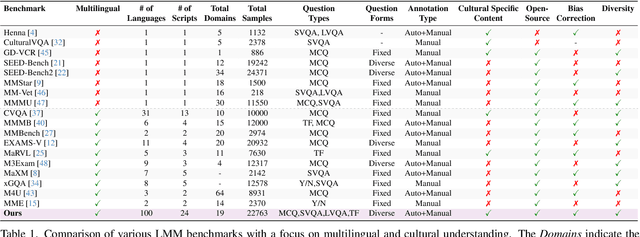
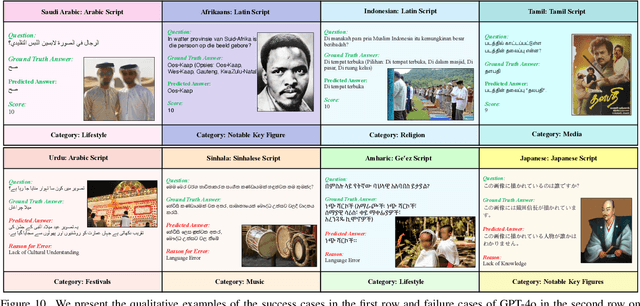
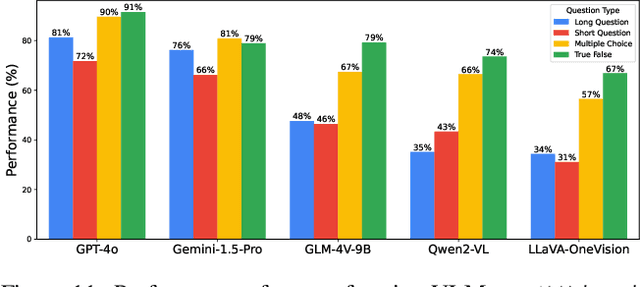

Abstract:Existing Large Multimodal Models (LMMs) generally focus on only a few regions and languages. As LMMs continue to improve, it is increasingly important to ensure they understand cultural contexts, respect local sensitivities, and support low-resource languages, all while effectively integrating corresponding visual cues. In pursuit of culturally diverse global multimodal models, our proposed All Languages Matter Benchmark (ALM-bench) represents the largest and most comprehensive effort to date for evaluating LMMs across 100 languages. ALM-bench challenges existing models by testing their ability to understand and reason about culturally diverse images paired with text in various languages, including many low-resource languages traditionally underrepresented in LMM research. The benchmark offers a robust and nuanced evaluation framework featuring various question formats, including true/false, multiple choice, and open-ended questions, which are further divided into short and long-answer categories. ALM-bench design ensures a comprehensive assessment of a model's ability to handle varied levels of difficulty in visual and linguistic reasoning. To capture the rich tapestry of global cultures, ALM-bench carefully curates content from 13 distinct cultural aspects, ranging from traditions and rituals to famous personalities and celebrations. Through this, ALM-bench not only provides a rigorous testing ground for state-of-the-art open and closed-source LMMs but also highlights the importance of cultural and linguistic inclusivity, encouraging the development of models that can serve diverse global populations effectively. Our benchmark is publicly available.
CAMEL-Bench: A Comprehensive Arabic LMM Benchmark
Oct 24, 2024Abstract:Recent years have witnessed a significant interest in developing large multimodal models (LMMs) capable of performing various visual reasoning and understanding tasks. This has led to the introduction of multiple LMM benchmarks to evaluate LMMs on different tasks. However, most existing LMM evaluation benchmarks are predominantly English-centric. In this work, we develop a comprehensive LMM evaluation benchmark for the Arabic language to represent a large population of over 400 million speakers. The proposed benchmark, named CAMEL-Bench, comprises eight diverse domains and 38 sub-domains including, multi-image understanding, complex visual perception, handwritten document understanding, video understanding, medical imaging, plant diseases, and remote sensing-based land use understanding to evaluate broad scenario generalizability. Our CAMEL-Bench comprises around 29,036 questions that are filtered from a larger pool of samples, where the quality is manually verified by native speakers to ensure reliable model assessment. We conduct evaluations of both closed-source, including GPT-4 series, and open-source LMMs. Our analysis reveals the need for substantial improvement, especially among the best open-source models, with even the closed-source GPT-4o achieving an overall score of 62%. Our benchmark and evaluation scripts are open-sourced.
 Add to Chrome
Add to Chrome Add to Firefox
Add to Firefox Add to Edge
Add to Edge